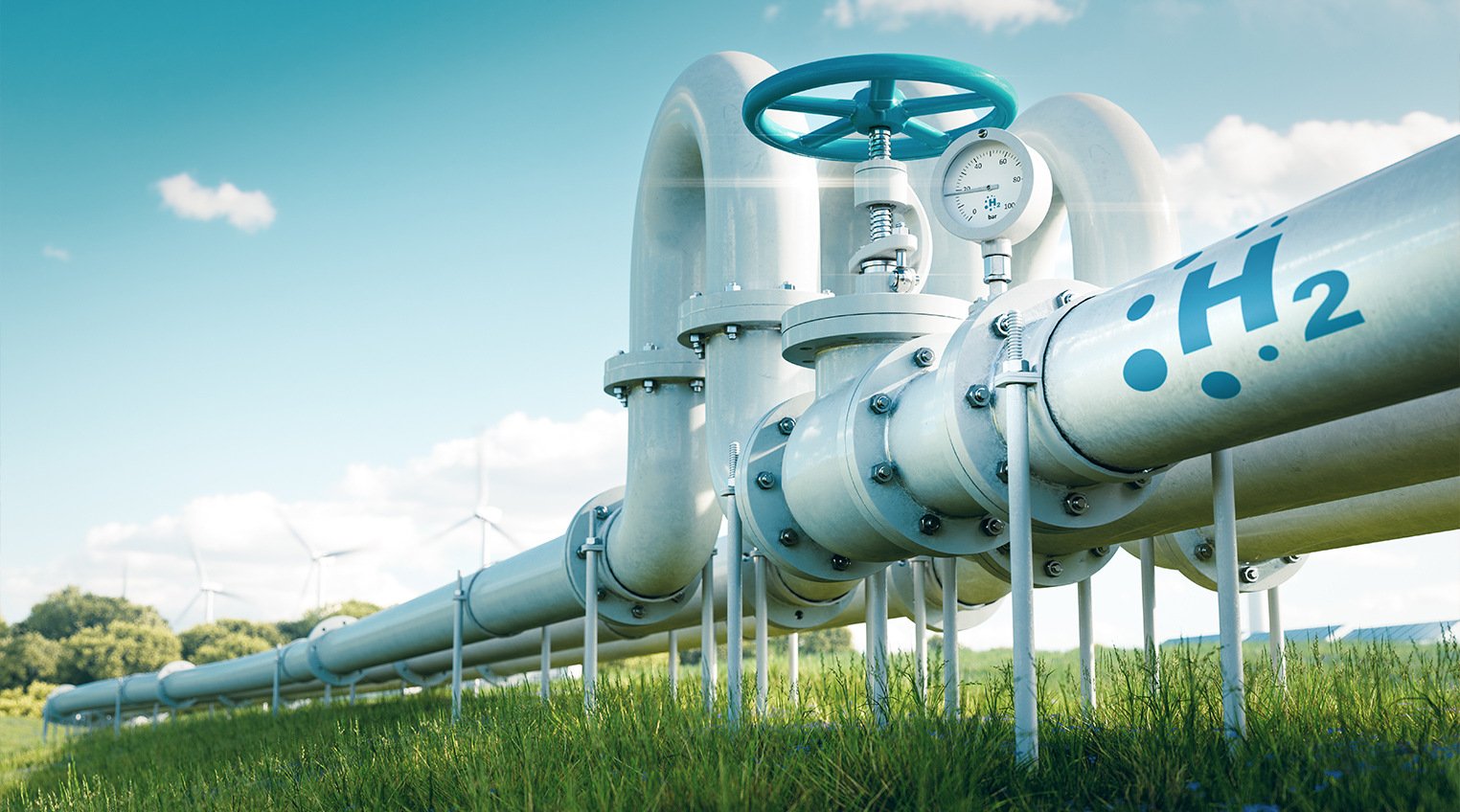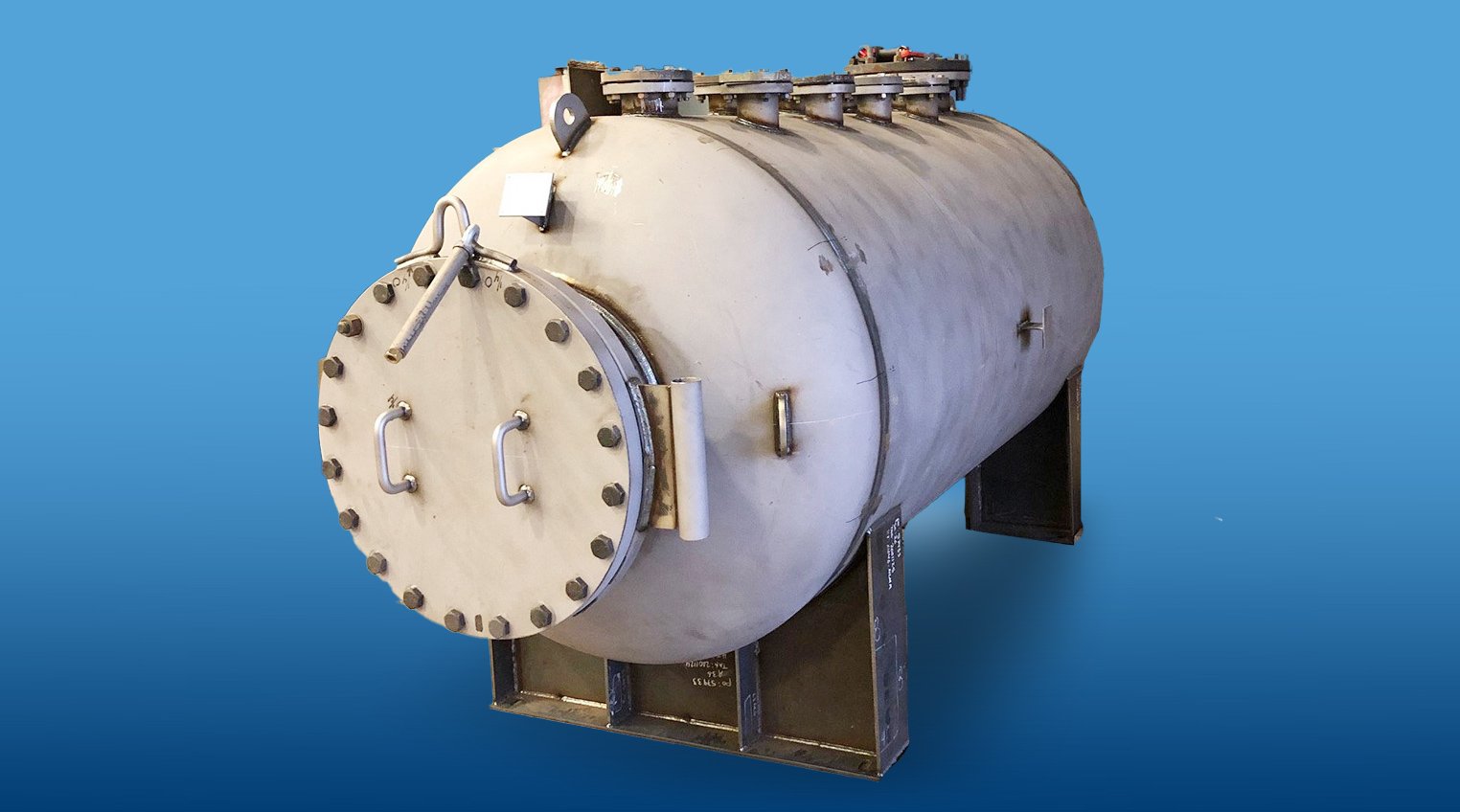Maximizing Hydrogen Electrolyzer Efficiency: Exploring Electrolyzers for Hydrogen Production and the Role of Rotolining
Making a lie of the statement, “It isn’t easy being green,” green hydrogen is gaining momentum as a viable form of sustainable energy. It offers numerous advantages compared to both traditional fossil fuels or solar and wind power. Imagine a sustainable energy form that has three times the density of lithium-ion batteries and that exceeds the density of traditional fossil fuels like gasoline or diesel.
Regardless of density, power is no good if it dissipates immediately after generation. One of the challenges of clean alternatives such as wind or solar power is storing the energy they generate.1 In contrast, hydrogen power is highly storable.2
Wind and solar also generate energy intermittently, another issue that green hydrogen can solve. Green hydrogen can facilitate the transition to a low-carbon economy without compromising reliability or efficiency. It offers the potential to integrate across sectors and applications, which has governments and private industry alike pursuing its adoption.
“Greenbacks” help private industry with green hydrogen adoption
As the world races towards a more verdant future, recent announcements by the U.S. Department of Energy (DOE) intend to promote and advance the pivotal role of hydrogen in the transition to sustainable energy sources. In March 2024, the DOE unveiled a groundbreaking initiative, allocating $750 million in funding across 52 projects spanning 24 states.
This initiative marks a significant leap forward in the quest for cleaner, more efficient energy solutions. It focuses on advancing electrolysis technologies and enhancing manufacturing and recycling capabilities for clean hydrogen systems and components. This incentive program is part of an ambitious DOE goal, or the Hydrogen Shot, designed to drive down the cost of clean hydrogen to $1 per kilogram, which would represent an 80% reduction compared to the current cost.

Other funding is available at the state level. For example, Colorado and Illinois both passed bills to create a tax credit of $1 per kg of H2 for the use of “clean” hydrogen in sectors that find emissions hard to abate. However, to achieve these cost reductions for more affordable hydrogen, operators must optimize hydrogen electrolysis efficiencies. And as part of this optimization, facilities need to protect equipment and capital resources from the corrosive effects of hydrogen processing, to avoid equipment damage or loss and subsequent downtime.
Achieving green hydrogen electrolyzer efficiency
The primary method of green hydrogen production is electrolysis using electric current generated by renewable energy sources such as solar and wind power. During the process of electrolysis, water is split into hydrogen and oxygen gases. Since no greenhouse gases or pollutants are emitted when the electricity source is carbon free, electrolysis lends itself a zero-carbon footprint.
The zero carbon emissions of green hydrogen, both in its production and in its use as a fuel for generating electric power, pose a clean and versatile energy solution with vast potential across industries ranging from transportation and manufacturing to power generation and beyond. By harnessing the power of green hydrogen, society can significantly reduce its reliance on fossil fuels, mitigate harmful greenhouse gas emissions, and usher in a new era of renewable energy dominance.
Major industrial facilities already are investing in electrolyzed hydrogen as a primary power source. Hydrogen produced via “green” electrolysis can result in zero greenhouse gas emissions, depending on the source of the electricity used, allowing companies to meet sustainability goals.
The corrosive nature of green hydrogen electrolysis
Certain types of electrolyzers rely on an alkaline electrolyte solution. The electrolytes used are typically potassium hydroxide (KOH) or sodium hydroxide (NaOH), which are highly corrosive. Subsequently, companies are already looking for corrosion-resistant solutions to line equipment used during processing, for tanks or pipes.

One technology that supplies a durable, chemically resistant yet cost-effective means to protect products and processes is rotational lining with ethylene tetrafluoroethylene (ETFE). ETFE is an exceptionally durable and chemically resistant fluoropolymer material, making it suitable for handling corrosive substances.
- Chemical resistance: ETFE supplies protection against corrosive chemicals, boasting exceptional resistance to strong bases like KOH and NaOH. ETFE linings fortify pipes and columns to endure prolonged exposure to corrosive electrolytes, without succumbing to degradation.
- Durability: Renowned for durability and toughness, ETFE is recommended for equipment lining in corrosive environments. ETFE-lined structures withstand the rigors of mechanical stress and harsh environmental conditions, providing longevity and reliability in industrial facilities, including for electrolysis processes.
- Temperature resistance: Tefzel™ has a broad continuous-use temperature range from -150° F to 300° F (-100° C to 150° C). Specific temperature ratings vary with equipment design; thus, it is important to consult with component manufacturers for in-use service recommendations.
- Non-stick surface: ETFE linings have a non-stick surface, which reduces fouling and the buildup of materials on the lining, leading to easier cleaning and maintenance of pipes and columns.
- Low friction coefficient: ETFE has a low coefficient of friction, facilitating smooth fluid flow within pipes and columns and reducing energy consumption in pumping systems.
- Electrical insulation: ETFE is an excellent electrical insulator, protecting against electrical conductivity in applications where insulation is required.
Overall, ETFE rotational lining offers a combination of chemical resistance, durability, and longevity, making it well-suited for containing corrosive liquids in electrolysis processes for hydrogen production.
Other industries that share this challenge of combatting corrosion have found success with rotational lining to protect capital equipment. RMB Products has decades of experience focusing on corrosion protection for industrial partners within chemical processing, oil and gas production, wastewater treatment, and mining. Whether it is protecting chemical storage tanks from acidic solutions, ensuring the integrity of pipelines conveying corrosive hydrocarbons, or safeguarding mining equipment from abrasive materials, RMB leverages the benefits of rotational lining, matched with the proper resin, for a versatile and effective solution.
RMB has a steadfast commitment to confidentiality, protecting the proprietary information of each of its customers through strict non-disclosure agreements. RMB has a firm commitment to quality and maintains a series of professional certifications, such as a certification for welding from the American Society of Mechanical Engineers Boiler and Pressure Vessel Code, Section VIII, Div. 1, and Section IX. The company also offers in-house testing services to guarantee its work, such as:
- Hydro
- Spark
- Pressure
- Flammability
- Leak
As green hydrogen projects grow, the time to plan is now
The International Energy Agency issued its Global Hydrogen Review 2023, which reported that the current global use of hydrogen was 95 Mt in 2022 and showed robust growth in all major consuming regions. Potential production by 2030 is 50% higher than the organization predicted just a year ago, based on current project lists. And this report states that the private sector is making the first bold moves to adopt low-emission hydrogen.3
As companies investigate and start planning green hydrogen projects, project managers already are reaching out to RMB for corrosion-resistant solutions that have proven successful in other industry installations in hundreds of locations. The journey towards sustainable hydrogen production begins with proper equipment protection to leverage green hydrogen efficiently. Are you in the planning stages for a new hydrogen electrolysis installation? Request a quote for corrosion protection to protect your capital equipment and to realize greater efficiencies.




